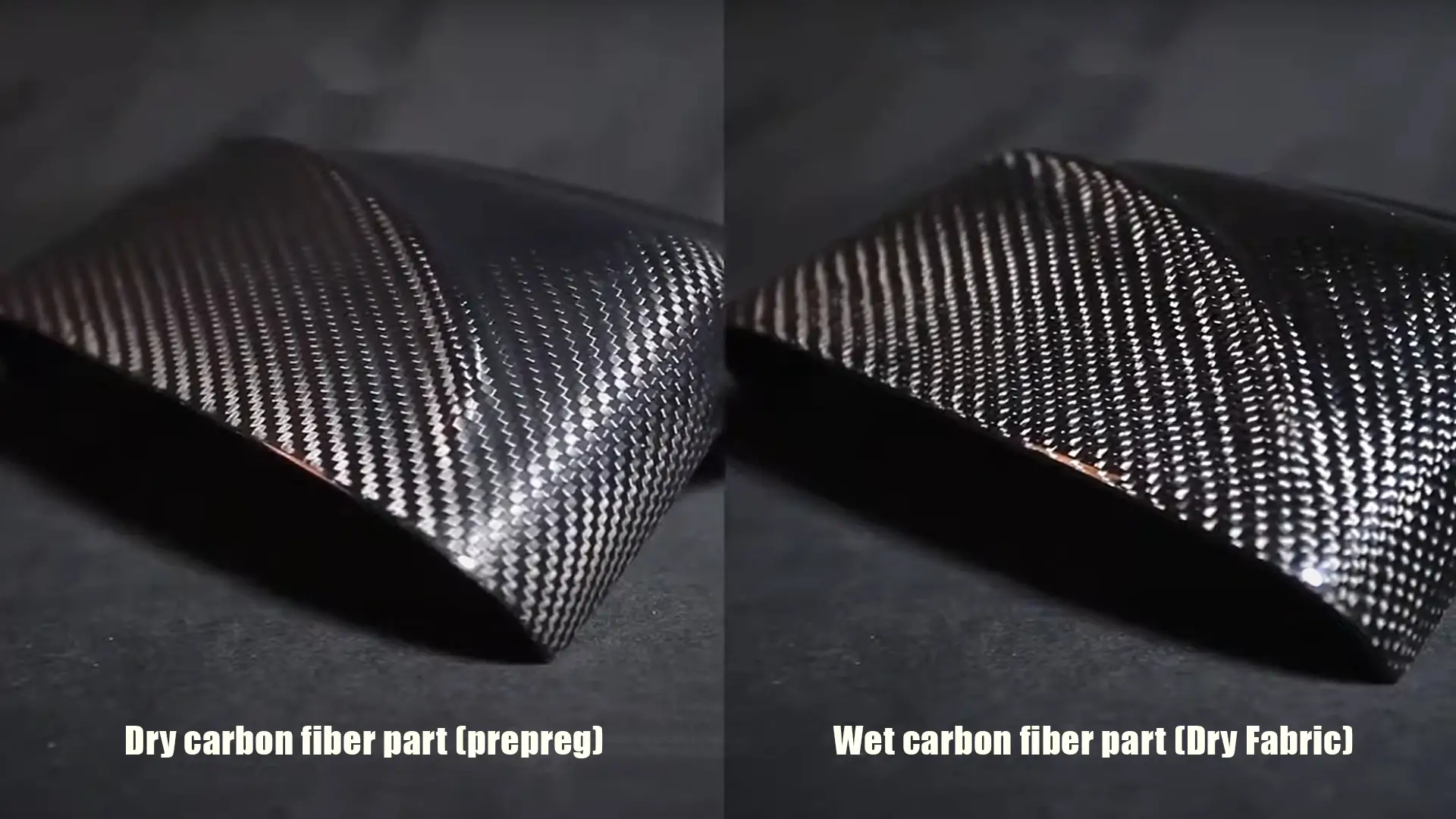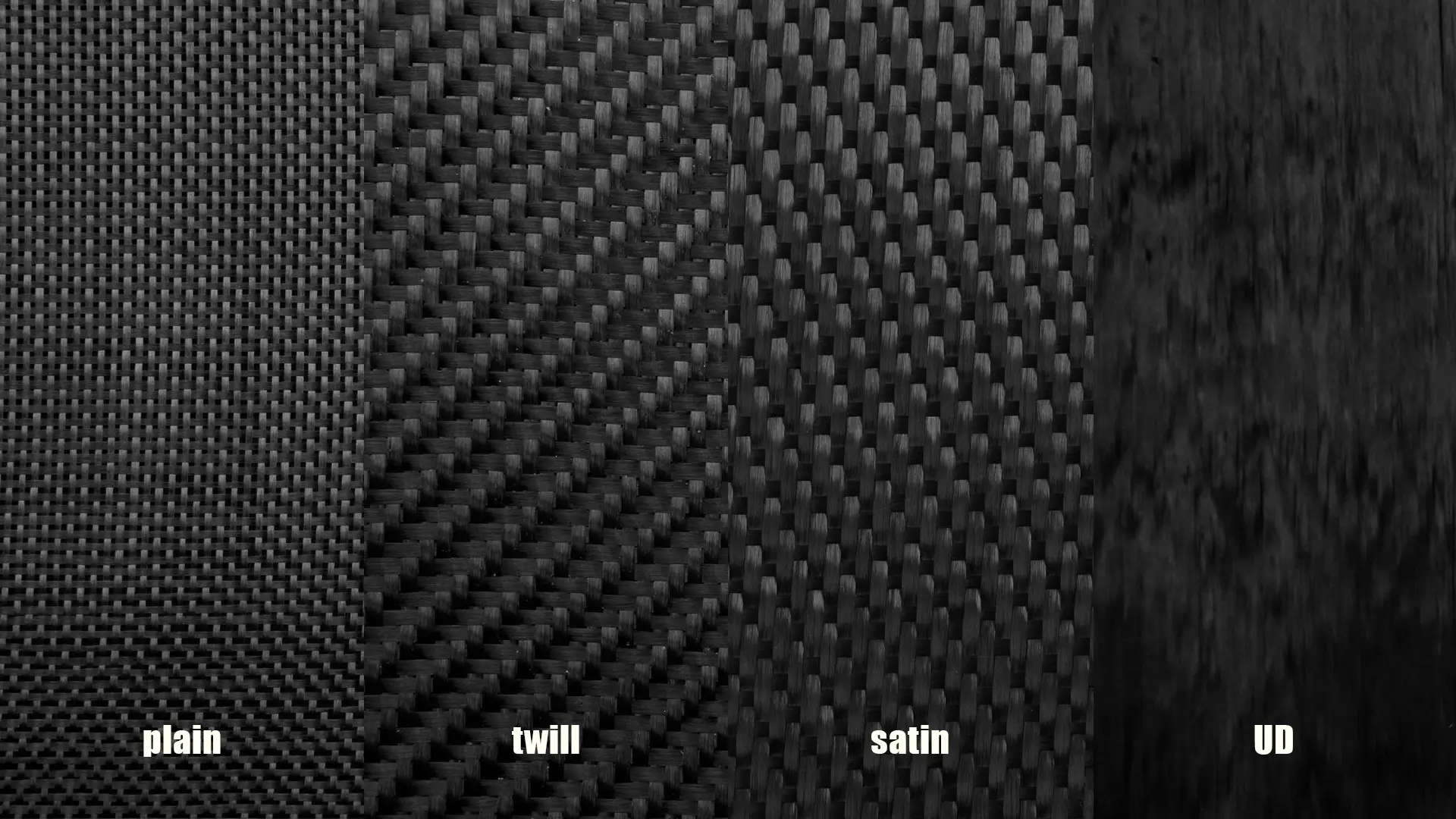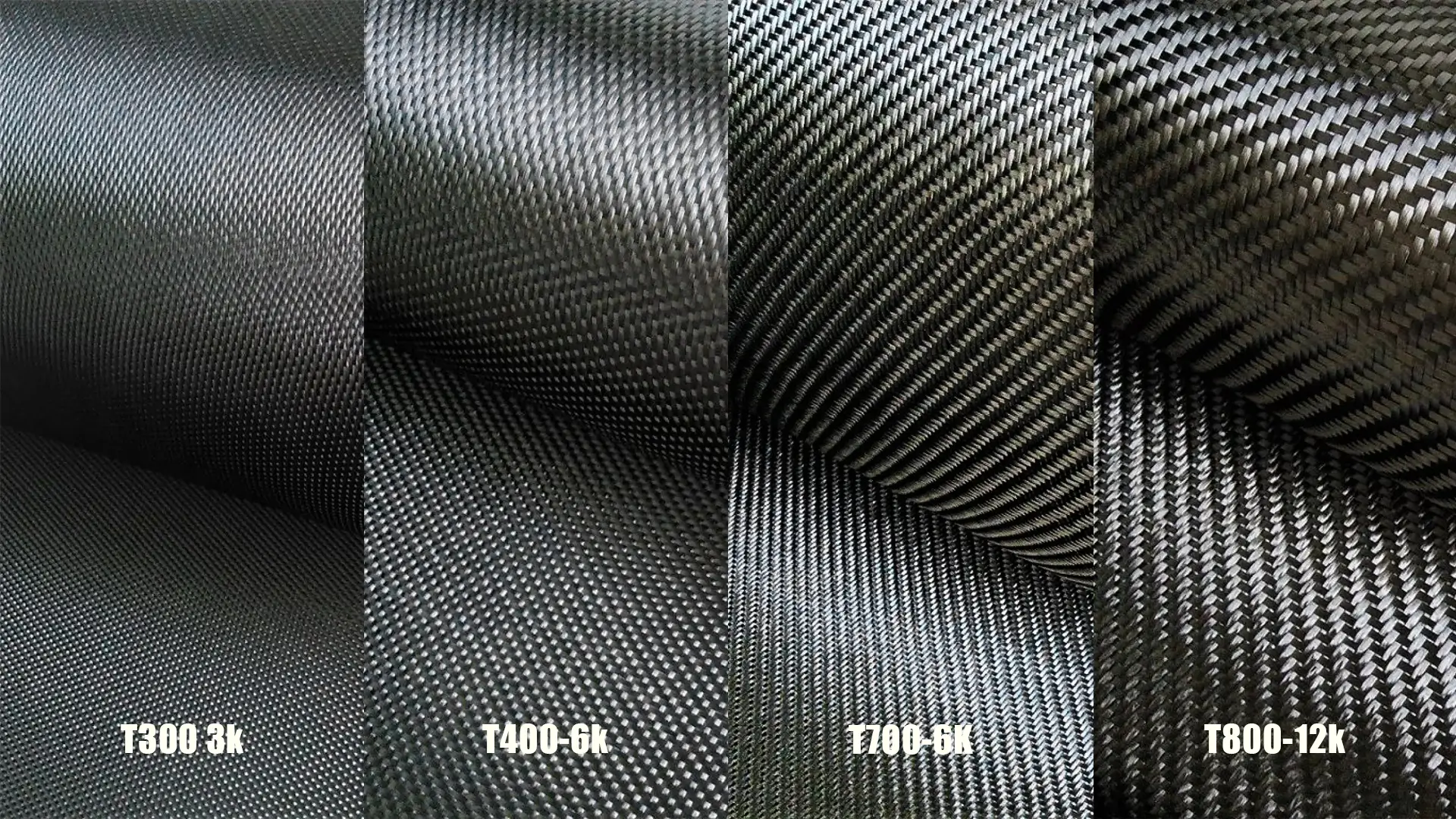Understanding Carbon Fiber Manufacturing Basics
Carbon fiber is known for its strength, light weight, and durability, which makes it ideal for industries like aerospace, automotive, and sports equipment. Carbon fiber is typically woven into fabric and then combined with resin to form a composite.
The difference between prepreg and dry fabric carbon fiber parts lies in the application of resin. Prepreg involves fabric that is pre-impregnated with resin, while dry fabric parts are made by applying resin during the manufacturing process.
How to Tell the Difference Between Dry Prepreg and wet custom Carbon Fiber Part
Distinguishing between dry prepreg and wet carbon fiber parts can be done by closely examining several factors, including visual inspection, weight, flexibility, resin distribution, and manufacturing processes. Here are the detailed steps and tips to help you identify which material was used.
1. Visual Inspection
The surface appearance of a custom carbon fiber part can provide immediate clues as to whether it’s made with prepreg or dry fabric.
- Dry prepreg Carbon Fiber Parts: These parts typically have a smooth, glossy finish. The resin is evenly distributed, giving the part a polished and uniform appearance. The fabric weave is usually clear and high-quality.
- Wet Carbon Fiber Parts: These parts tend to have a matte or less glossy surface. Since resin is applied during manufacturing, the finish may not be as uniform, and the fabric weave might appear less consistent.
| Feature | Dry Prepreg Carbon Fiber Parts | Wet Carbon Fiber Parts |
|---|---|---|
| Finish | Glossy, smooth, consistent | Matte or uneven, less glossy |
| Weave Visibility | Clear, high-quality weave | Weave may appear less consistent |
| Surface Quality | High-quality, minimal imperfections | Possible slight imperfections |
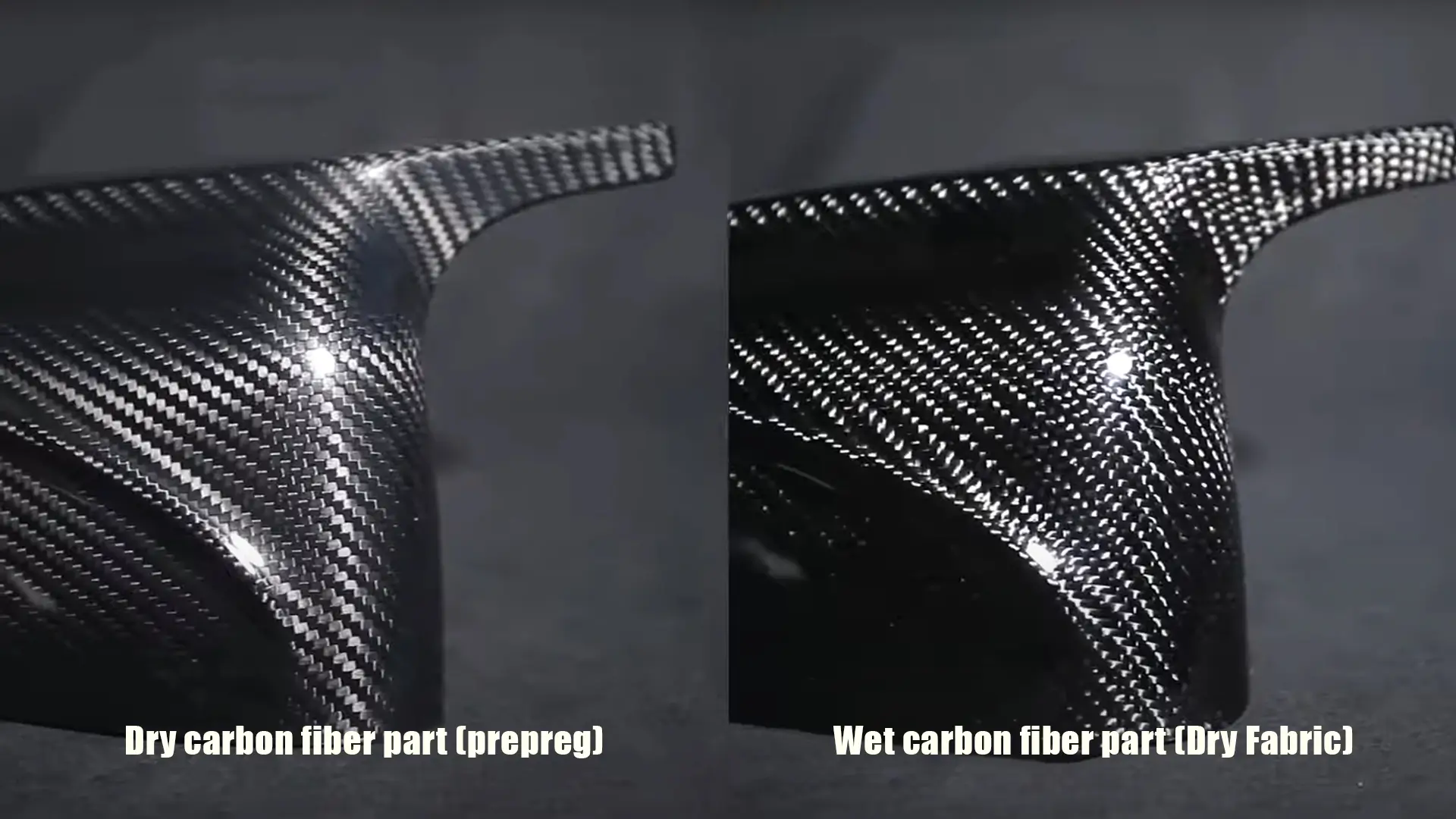
2. Weight Comparison
Another way to tell the difference is by comparing the weight of the parts. Prepreg parts tend to be slightly heavier due to the uniform resin content.
- Dry prepreg Carbon Fiber Parts: These parts generally have a higher density because the resin is impregnated into the fibers beforehand. This makes the part slightly heavier.
- Wet Carbon Fiber Parts: These parts may be lighter because the resin is applied during molding, and the resin content is typically lower.
| Feature | Dry Prepreg Carbon Fiber Parts | Wet Carbon Fiber Parts |
|---|---|---|
| Weight | Slightly heavier, consistent density | Lighter, less resin content |

3. Flexibility and Stiffness
Flexibility and stiffness can also provide insight into whether a part is made from prepreg or dry fabric.
- Dry prepreg Custom Carbon Fiber Part: These parts are stiffer once cured due to the uniform resin bonding between the fibers. The resin creates a solid and rigid structure.
- Wet Custom Carbon Fiber Part: These parts are often more flexible before curing. Because resin is applied during the molding process, the flexibility of wet parts can vary depending on how well the resin saturates the fabric.
| Feature | Dry Prepreg Carbon Fiber Parts | Wet Carbon Fiber Parts |
|---|---|---|
| Flexibility | Less flexible, more rigid | More flexible before curing |
| Stiffness | Stiffer once cured | Less stiff due to less resin control |
4. Resin Distribution
The distribution of resin plays a major role in determining the final properties of the part.
- Dry prepreg Custom Carbon Fiber Part: Resin is evenly impregnated throughout the fabric. This results in consistent quality and uniform strength across the part.
- Wet Custom Carbon Fiber Part: Resin is applied during molding, which can lead to uneven resin distribution. Techniques like vacuum infusion or hand layup are used, but the resin distribution may still be less controlled than in prepreg parts.
| Feature | Dry Prepreg Carbon Fiber Parts | Wet Carbon Fiber Parts |
|---|---|---|
| Resin Distribution | Even and controlled | Uneven, less controlled distribution |
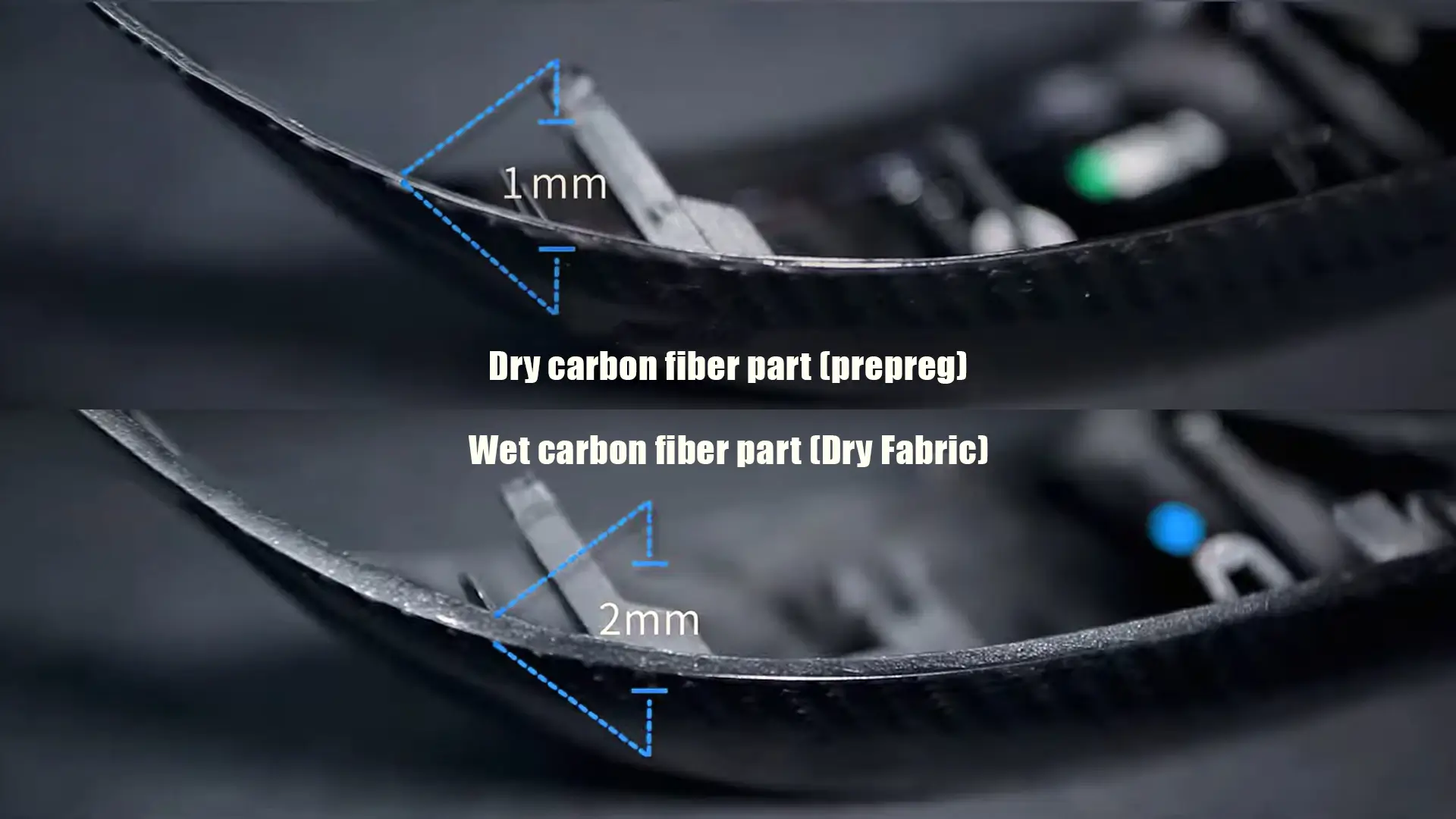
5. Manufacturing Process
The manufacturing process used for each type of part can be another clue.
- Dry prepreg Custom Carbon Fiber Part: These parts are typically produced using an autoclave process, where heat and pressure are applied to cure the resin. This results in a high-quality, strong part with minimal defects.
- Wet Custom Carbon Fiber Part: Wet parts are often made using open molding techniques, such as resin infusion, vacuum bagging, or hand layup. While these methods can be more cost-effective, they may not produce the same level of consistency or strength as the autoclave process.
| Feature | Dry Prepreg Carbon Fiber Parts | Wet Carbon Fiber Parts |
|---|---|---|
| Manufacturing Process | Autoclave curing under heat and pressure | Open molding, resin infusion, hand layup |

Conclusion
Distinguishing between custom carbon fiber prepreg parts and custom carbon fiber dry parts is essential for understanding the final product’s performance, quality, and cost. By carefully evaluating visual appearance, weight, flexibility, resin distribution, and the manufacturing process, you can determine which method was used to create your part.
Final Thoughts
As composite material experts, we are willing to provide you with critical assistance. The correct judgment now avoids cost overruns, delays, and disappointing results later.
Need advice on your custom carbon fiber part? Reach out to our team for expert guidance.
